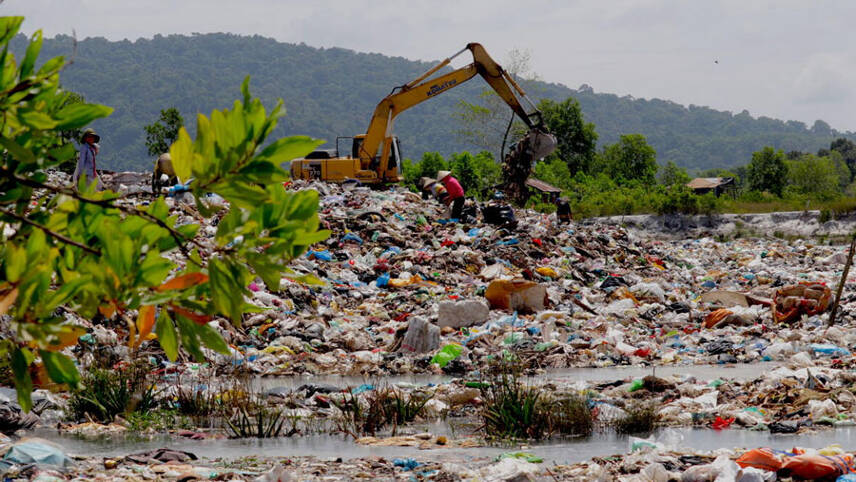Register for free and continue reading
Join our growing army of changemakers and get unlimited access to our premium content

Image: WWF-Vietnam / Denise Stilley
That is according to new research out this week from WWF.
The environmental NGO estimates that the total lifetime cost of a kilogram of plastic is around $19 in high-income countries. Costs accounted for include not only sourcing, manufacturing and disposing of the plastics, but also the externalised costs to the environment and human health along the way.
Yet in the average low-income or middle-income nation, this cost skyrockets eightfold to $150. In the nations with the worst waste management infrastructure, these costs can be as high as $200 per kilo.
The report outlines how national and subnational Governments developing and emerging markets tend to lack the technical and financial resources to rapidly scale waste management infrastructure in line with increasing consumption.
These policymakers are also likely to have minimal influence on which plastic products are produced and are unlikely to feel they have the power to hold companies and other countries to account when pollution happens.
Also discussed in the report are perceived trade-offs between economic growth and plastic pollution. For example, single-use sachets are popular for cleaning and personal care products in low and middle-income countries as they give people access to low-cost, small quantities of products.
Moreover, some low and middle-income nations see importing plastic waste as an economic boost even if they do not have the capacity to properly manage it. Others are designing outright bans on imports, including Vietnam.
WWF International’s senior director of policy, influence and engagement, Alice Ruhweza, said: “Our take, make, waste plastics system is designed in a way that unfairly impacts our planet’s most vulnerable and disadvantaged countries.
“Instead of resolving the world’s plastic pollution crisis in the most efficient way, the system shifts the bulk of the costs to those least equipped to manage them, with no accountability placed on those who produce and use the products in the first place.”
Treary debates
Also this week, Tearfund has warned that Sub-Saharan Africa will produce almost six times more plastic waste in 2060 than it did in 2019. This is before potential waste imports are accounted for.
There is a real risk, the agency is warning, that waste management systems will not scale up at the scale and pace necessary to deal with this increase in waste.
At present, enough plastic waste to cover a football pitch is openly dumped or burnt in the region every minute. The UN estimates that up to 90% of the waste generated in Sub-Saharan Africa each year is disposed of at uncontrolled landfills, dumping sites and incineration sites.
Tearfund and WWF have released their new statistics on the eve of the next round of negotiations to develop a global, binding treaty intended to bring a stop to plastic pollution. Negotiators will meet at the UN Environment Programme’s headquarters in Nairobi, Kenya, from 13 to 19 November, for these discussions, known as INC-3.
“Negotiators should feel the weight of the world’s hopes on their shoulders as they meet in Nairobi,” said Tearfund’s senior economist Rich Gower. “They need to agree to big reductions in the production of plastics, ensure that all the rest is collected and recycled, and deliver justice for waste pickers.”
Tearfund is advocating for the treaty to include binding targets to reduce plastic production and scale up reuse.
Negotiators have already agreed that the treaty should cover the entire plastic lifecycle including production, despite strong counter-lobbying from the petrochemical industry and some of the nations producing the most plastics. Whether targets are global or whether nations are allowed to come up with their own targets to deliver their fair share of progress is yet to be agreed.
The UN is aiming to have a finalised treaty ratified in 2024. It has stated that it would be possible to cut global plastic pollution rates by 80% by 2040, and reap more than $4.5trn of cost savings in the process. This would require major policy shifts and market adjustments.


Please login or Register to leave a comment.